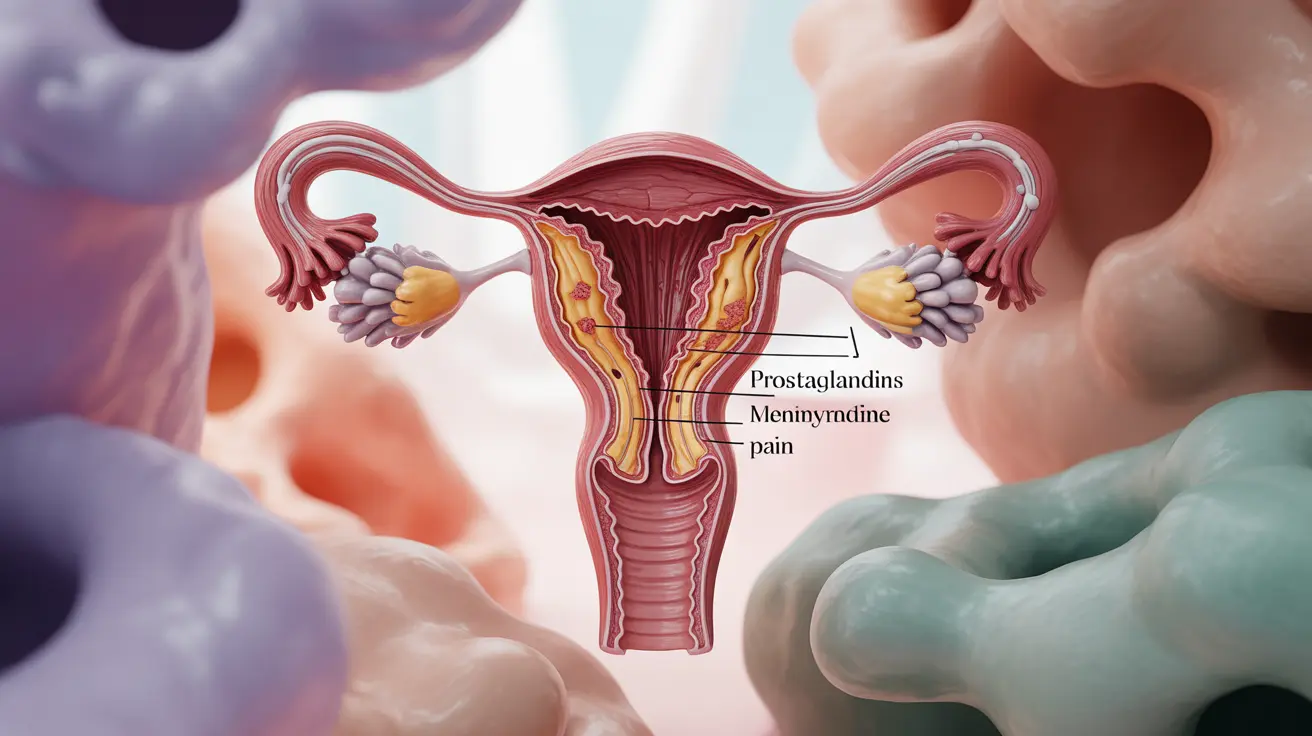For many individuals who menstruate, the relationship between prostaglandins and period pain is a crucial yet often misunderstood connection. These naturally occurring compounds play a significant role in menstrual symptoms, particularly in causing those familiar monthly cramps that affect millions worldwide.
Understanding how prostaglandins influence your menstrual cycle can help you better manage period-related discomfort and make informed decisions about treatment options. Let's explore the complex relationship between these biological compounds and menstrual health.
What Are Prostaglandins?
Prostaglandins are lipid compounds that act like hormones in the body, influencing various processes including inflammation, blood flow, and muscle contractions. During menstruation, these compounds are released from the uterine lining and play a crucial role in the menstrual process.
The Connection Between Prostaglandins and Menstrual Pain
During the menstrual cycle, prostaglandin levels naturally increase just before menstruation begins. These compounds cause the uterus to contract, helping to shed the uterine lining. While this process is necessary, it can also lead to significant discomfort and pain.
How Prostaglandins Affect Uterine Contractions
When prostaglandin levels rise, they trigger strong uterine muscle contractions. These contractions can temporarily reduce blood flow to the uterus, causing the pain and cramping associated with menstruation. Higher levels of prostaglandins often correlate with more severe menstrual cramps.
Managing Prostaglandin Levels
Medical Interventions
NSAIDs (Non-Steroidal Anti-Inflammatory Drugs) like ibuprofen and naproxen work by blocking prostaglandin production. Taking these medications before or at the onset of menstruation can help reduce pain and inflammation by lowering prostaglandin levels.
Natural Approaches
Several natural methods may help manage prostaglandin levels and reduce menstrual discomfort:
- Regular exercise
- Omega-3 fatty acid supplementation
- Heat therapy
- Dietary modifications
- Stress reduction techniques
Impact on Menstrual Flow
Prostaglandins don't just affect pain levels; they can also influence the amount and duration of menstrual bleeding. Higher prostaglandin levels may contribute to heavier periods, while managing these levels can help regulate menstrual flow.
Frequently Asked Questions
What role do prostaglandins play in causing menstrual cramps and period pain? Prostaglandins trigger uterine muscle contractions necessary for shedding the uterine lining. These contractions can reduce blood flow to the uterus, resulting in the pain and cramping associated with menstruation.
How do NSAIDs like ibuprofen and naproxen help reduce prostaglandin levels during periods? NSAIDs work by inhibiting the enzymes responsible for prostaglandin production. By reducing prostaglandin levels, these medications help decrease uterine contractions and associated pain.
Can high prostaglandin levels affect the severity or duration of menstrual bleeding? Yes, elevated prostaglandin levels can contribute to heavier and more prolonged menstrual bleeding by affecting blood vessel constriction and the intensity of uterine contractions.
What natural methods or supplements can help lower prostaglandins to ease menstrual cramps? Natural approaches include consuming omega-3 fatty acids, maintaining regular exercise, applying heat therapy, following an anti-inflammatory diet, and practicing stress management techniques.
Why do prostaglandin levels rise before menstruation and how does this affect uterine contractions? Prostaglandin levels increase before menstruation to help facilitate the shedding of the uterine lining. This rise causes stronger uterine contractions, which can lead to cramping and discomfort during menstruation.




